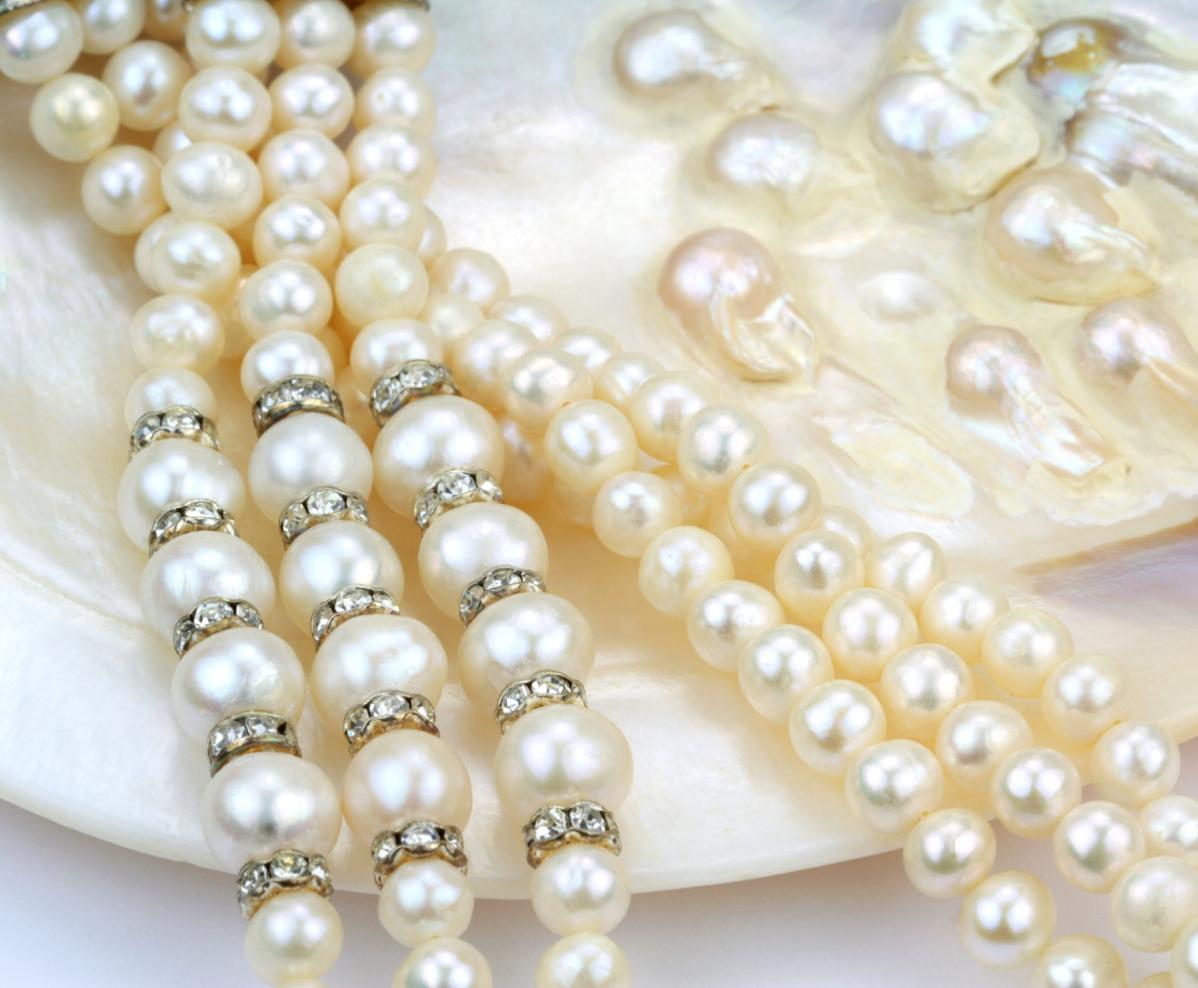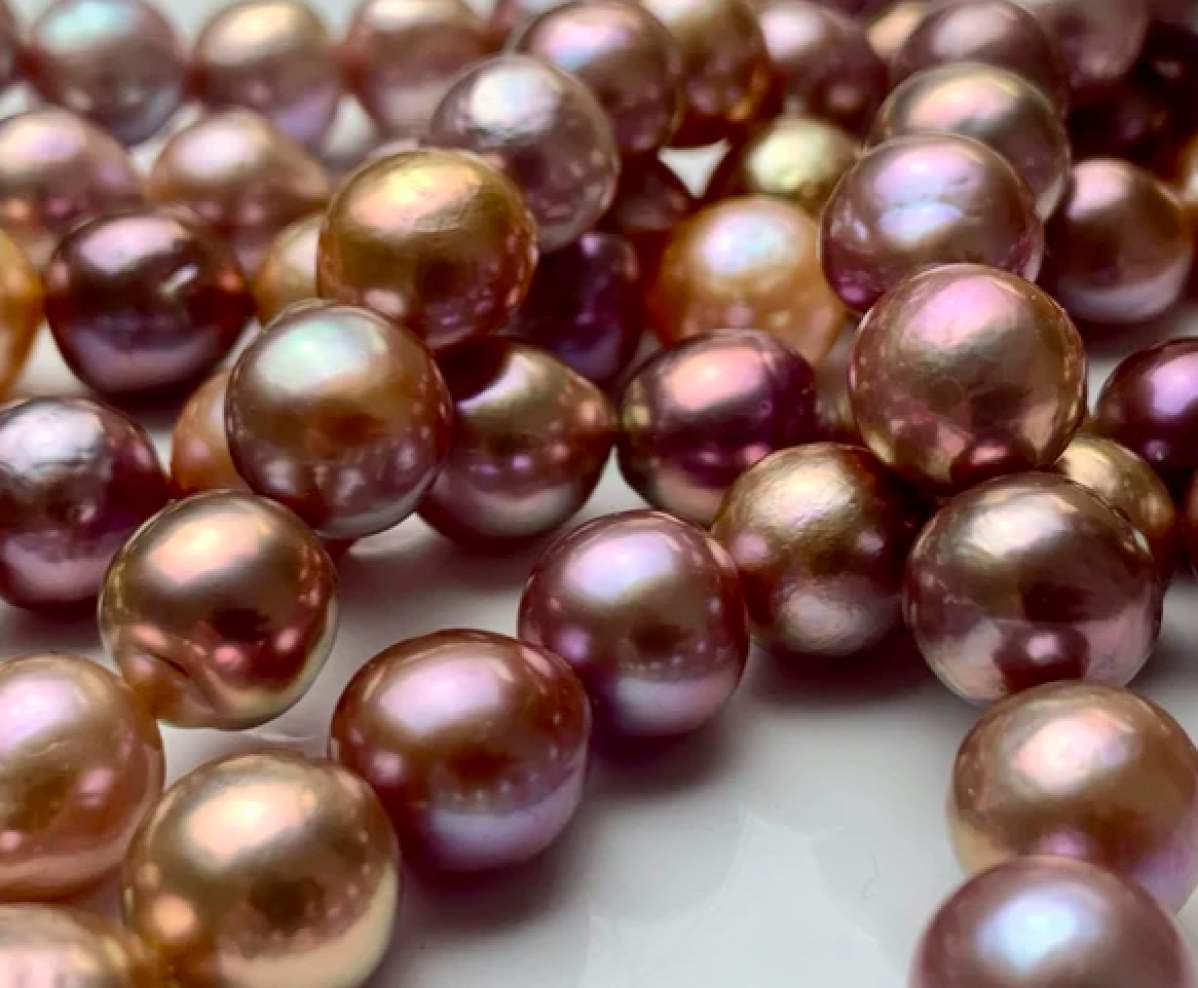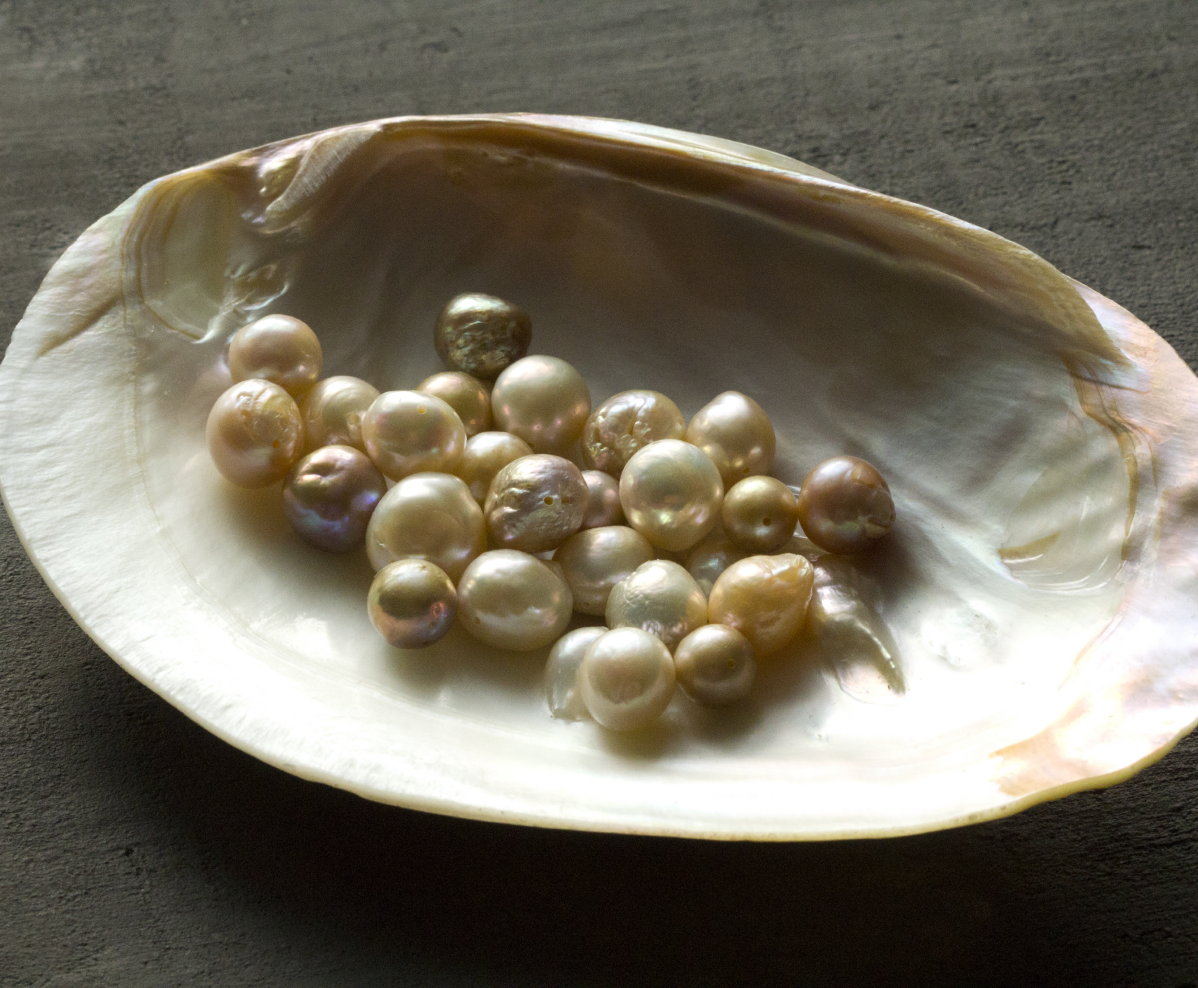
types of pearls

Fresh Water Pearls
The undisputed leader in freshwater pearl cultivation today is China, however, they were originally cultivated in Japan. The unique ability of the mollusk Hyriopsis cumingi to grow dozens of pearls at a time makes freshwater pearls more affordable than saltwater pearls. As a result, freshwater pearls are most used in jewellery pieces, ranging in size from 2 to 9 mm in diameter. Rarely, they may reach 13 mm, but it takes 7-8 years to grow a pearl so big, which inevitably affects its value. The most popular and unpretentious size is 7-8 mm.
A classical thread of this size goes well with both a business suit and an evening gown. Natural colours of freshwater pearls include white, cream and many shades of pink, ranging from the softest peach to lush lavender. Grey and black colours of freshwater pearls are achieved by dyeing. Creating inimitable shapes, nature has given us a unique gift. The most frequently used forms of freshwater pearls in the jewellery industry are symmetrical, spherical, oval, baroque, teardrop-shaped and button-shaped. The most valuable freshwater pearl being the round pearl, as this form is formed the least frequently.
A classical thread of this size goes well with both a business suit and an evening gown. Natural colours of freshwater pearls include white, cream and many shades of pink, ranging from the softest peach to lush lavender. Grey and black colours of freshwater pearls are achieved by dyeing. Creating inimitable shapes, nature has given us a unique gift. The most frequently used forms of freshwater pearls in the jewellery industry are symmetrical, spherical, oval, baroque, teardrop-shaped and button-shaped. The most valuable freshwater pearl being the round pearl, as this form is formed the least frequently.

Edison Pearls
The Edison pearl is the result of many years of work by the brother and sister duo Zhang of China. This freshwater pearl gets its name after the famous American scientist-inventor Thomas Edison, who once said: "There are two things you can't get in my laboratory - diamonds and pearls.". Since 2014, Edison pearls have been grown on an industrial scale at pearl farms in China. The process of cultivating Edison pearls is kept strictly secret. However, one thing is known.
A new type of freshwater pearl obtained by crossbreeding is used for the pearl’s cultivation. Unlike freshwater pearls, which use Hyriopsis cumingi to grow them, the Edison pearl grows alone. This, as well as a perfectly spherical implant nucleus, allows it to reach a diameter of 16 mm, an unprecedented size for freshwater pearls. Edison pearls have a characteristic rich metallic lustre and a wonderful round shape. Moreover, they have a beautiful palette of colours - white, cream, plum, purple, many shades of pink, and are cheaper than sea pearls. The price advantage allows Edison pearls to successfully compete with South Sea pearls. Each pearl takes 2-3 years to grow.
A new type of freshwater pearl obtained by crossbreeding is used for the pearl’s cultivation. Unlike freshwater pearls, which use Hyriopsis cumingi to grow them, the Edison pearl grows alone. This, as well as a perfectly spherical implant nucleus, allows it to reach a diameter of 16 mm, an unprecedented size for freshwater pearls. Edison pearls have a characteristic rich metallic lustre and a wonderful round shape. Moreover, they have a beautiful palette of colours - white, cream, plum, purple, many shades of pink, and are cheaper than sea pearls. The price advantage allows Edison pearls to successfully compete with South Sea pearls. Each pearl takes 2-3 years to grow.

Kasumi Pearls
The freshwater pearl of Kasumi is native to Japan. This beautiful stone takes its name from Lake Kasumi where they are still cultivated today. Kasumi pearls are cultivated using freshwater shells which were bred from a cross between Hyriopsis cumingii and Hyriopsis schlegelii species mollusks. This type of pearl, like the saltwater pearl, is cultured using a nucleus and has a completely amazing, drop-shaped form. Possible pearl sizes range from 9 to 13mm, with 10-12mm being the most common.
Kasumi pearls come in a variety of dazzling colours - cream, peach, many shades of pink, deep purple, and even golden green. Unfortunately, growing Kasumi pearls these days in Japan is threatened by the pollution of Lake Kasumi. Nowadays, freshwater Kasumi-style pearls are successfully grown in China. The Chinese equivalent of Japanese Kasumi is commonly referred to as "Kasumi like" or "Ripple Pearls".
Kasumi pearls come in a variety of dazzling colours - cream, peach, many shades of pink, deep purple, and even golden green. Unfortunately, growing Kasumi pearls these days in Japan is threatened by the pollution of Lake Kasumi. Nowadays, freshwater Kasumi-style pearls are successfully grown in China. The Chinese equivalent of Japanese Kasumi is commonly referred to as "Kasumi like" or "Ripple Pearls".

 Store Locator
Store Locator
 Call Us
Call Us
 Send a message
Send a message
 Book an Appointment
Book an Appointment